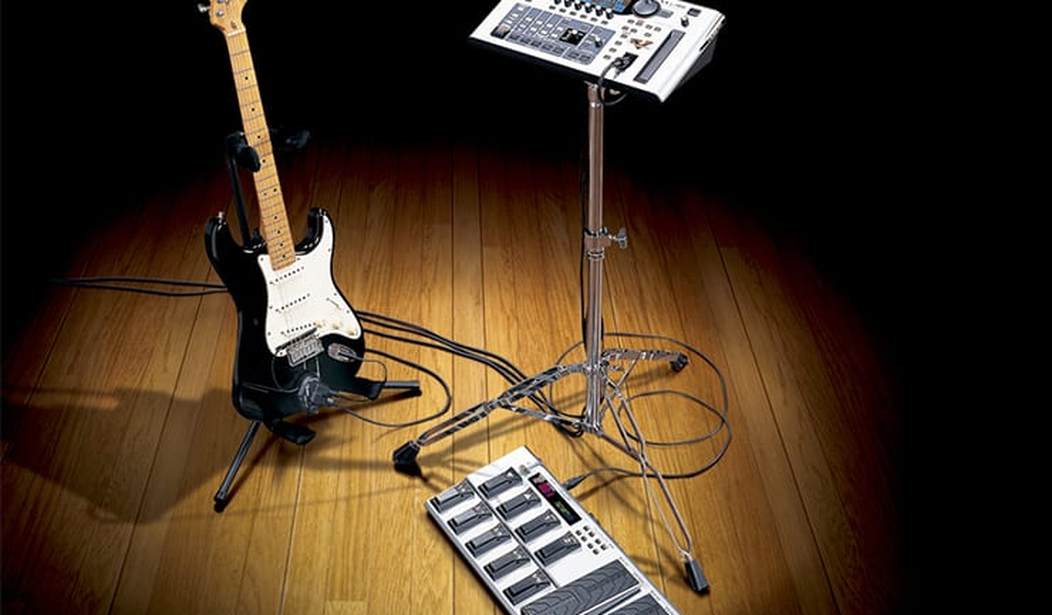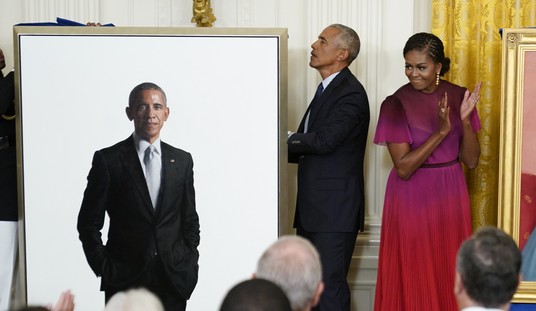Note: This article originally ran on October 28, 2007 at Blogcritics.org, where I was among its earliest and most prolific contributors. I wrote numerous essays, interviews and product reviews there until about 2009 or so. At some point in late 2017, the current management at Blogcritics chose to remove all of my articles without notifying me, and have yet to respond to my email requests for an explanation, or to let me know how to restore them there. (Accidents happen on the Internet; perhaps it was just a glitch?) In the interim, I will slowly be reposting my more interesting pieces here.
It’s awfully minor in the scope of global conflicts, but there’s a sort of ongoing tension between electric guitar players and musical equipment manufacturers. As I’ve written before, the middle-aged men who make up the bulk of the electric guitar market are typically buying reissues of the guitars that the heroes of their youth played, such as Jimi Hendrix, Jimmy Page, Jeff Beck, and Eric Clapton. And certainly, the reissues of the classic Fender Stratocasters and Gibson Les Pauls of the 1950s are terrific guitars, the best of which are now being built with a quality that almost rivals the original iconic instruments of the 1950s.
And yet, guitar technology has advanced in many ways since the days when Leo Fender and Ted McCarty were revolutionizing the musical world. And whereas the Strat and Les Paul are capable of generating a handful of beautiful tones, for the price of one new electric guitar, it’s now possible to generate literally hundreds of different sounds.
Case in point: Roland’s VG-99 Virtual Guitar system, which hit the streets at the start of the month. Streeting at about $1200 and packed with 200 presets, the best of which are truly stunning, this is the culmination of a guitar modeling system that Roland has been crafting since the mid-1990s.
The VG-99 builds on many of the requests the users of the previous model, the VG-88 had requested. And speaking of which, please allow me to make a brief mea culpa: When I reviewed the VG-88 virtual guitar system at the start of the year for Blogcritics, I knew it had been out on the market for several years, but had no idea it was about to be rendered superfluous in the Roland catalog.
Hex Machine
To make full use of the VG-99, you’ll also need to install a Roland-compatible hexaphonic pickup on your guitar, or use an instrument already equipped, such as those made by Godin, or Fender’s Roland-Ready Stratocaster, which I used to test the unit. Like the predecessor VG-88, it’s also possible to plug an electric guitar with a conventional quarter-inch jack into the VG-99. Most of the more extreme modeling patches won’t trigger, but it’s a great way to make use of a trusty old Les Paul, Tele, or any other non-hex-equipped electric guitar and drive basic amp sounds.
Up From The Floor
The VG-99’s case is the first sign that Roland has radically rethought their guitar modeling system. England’s Sound On Sound magazine once dubbed the aesthetics of the predecessor VG-88’s black metal case as a cross between a doorstop and the Stealth Bomber, which seems apt, particularly since the VG-88’s case was designed for floor use. In contrast, the VG-99 is housed in a silver plastic case that looks like it could pass for a later version of one of Roland’s iconic drum machines. It’s designed for tabletop use, or on stage, via a metal stand, which Roland sells as an optional accessory. Another accessory from Roland allows the VG-99 to be rack mounted.
But many will find the tabletop design of the VG-99 a handy adjunct to their PC-based recording efforts, which was Roland’s intent from the start. Unlike the VG-88, which had only quarter-inch stereo and headphone jacks, the VG-99 provides a variety of audio outputs. In addition to the same quarter-inch stereo and headphone outputs, the VG-99 adds USB, digital (via an RCA-jack), and XLR outputs.
There are also MIDI inputs and outputs, and the VG-99’s USB output will also transmit MIDI data from a guitar with a compatible hexaphonic pickup. There’s also what appears to a network jack, which is designed to connect the VG-99 to its FC-300 floor controller accessory.
While the floor controller isn’t required to operate the VG-99, it does provide several intriguing options, not the least of which is its foot pedal, which, depending upon the patch selected, can perform one of several functions. It can be a volume pedal, useful for both volume swells, and simply adjusting the output level of the VG-99, particularly on stage. It can also function as a wah-pedal, and it can manipulate pitch, including both whammy-bar style dive bombs, and individual strings. In other words, for those who don’t wish to purchase a B-Bender-equipped Telecaster, the floor pedal can be programmed for some pretty amazing-sounding bender licks — with much less chance of breaking strings in the process!
While the VG-99 can be rack mounted (and controlled pretty well with its supplied software), rack-mounting would render two of the VG-99’s most intriguing new features much more difficult to use. In addition to optional foot control, the VG-99 has built-in two pretty nifty effects that Roland has adapted from their keyboard synthesizers. These include a finger-sliding “ribbon” controller, which can be switched to control the pitch and filter settings of most patches. Perhaps more intriguingly, there’s also Roland’s “D-Beam”, which can also control many patches by waving a hand over the VG-99, or even a guitar neck. The D-Beam could even provide the opportunity for some flashy stage gestures, reminiscent of Jimmy Page and his Theremin in Zeppelin’s concert movie, The Song Remains The Same.
And speaking of Zeppelin, whoever programmed the presets of the VG-99 has included several versions of DADGAD, one of Page’s favorite alternate tunings, which Page used for several Indian-sounding compositions within Zeppelin, including, most famously “Kashmir”. A patch called Z DADGAD, with its combination of a modeled Danelectro guitar, distortion, and slow phasing nails this tone perfectly. Other patches reproduce DADGAD in six and 12-string acoustic versions, and even as a sitar patch.
Back To The Future: The Built-In GR-300
Robert Fripp’s early 1980s tones, radically different from Page and other blues-based guitarists, are also well represented in the VG-99, via the VG-99’s built-in recreation of Roland’s GR-300 guitar synthesizer. This landmark synthesizer, the first guitar synthesizer that tracked accurately and was easy to use, was played by several superstar guitarists with a taste for the avant-garde in the early 1980s, including Fripp and Adrian Belew in the then-newly reconstituted King Crimson, Andy Summers in the Police, and Jimmy Page. And Pat Metheny uses one to this day. Unlike modern sampling synthesizers, no one would confuse the GR-300’s sounds with real strings, flutes, or other acoustic instruments. It’s not that kind of synth. But it does provide the guitarist a variety of fat analog sounds, and the original introduced many guitarists to the electronic realm for the first time.
What are the downsides to the VG-99? One is in the area of alternate tunings. The unit can easily process straight octave conversions (and its modeled bass tones are pretty nifty), but some alternate tunings seem to generate some very slightly suspect pitches on the higher strings of my Roland-Ready Strat. For the player who needs to switch to Keith Richards’ favorite Open-G tuning to bash out “Brown Sugar” once a night, the VG-99 is more than up to the task. For more delicate studio work, some guitarists may still want to retune their guitars. (And incidentally, the VG-99 features a decent built-in tuner.)
Also, the VG-99’s plastic case, bristling with controls, seems like it might be slightly more fragile for stage use than the steel-cased “stealth doorstop” floor-mounted design of its predecessors. But no more so than the average keyboard synthesizer.
And like a keyboard synth, expect a bit of a learning curve coming to grips with all of the VG-99 options, which are myriad. But just playing the presets will provide hours and hours of fun for any guitarist. Not to mention provide the ability to flip through patches to find the perfect sounds when recording, in a way that synthesizer players have taken for granted for the last 25 years. The guitar of the future is here, if you want it.










Join the conversation as a VIP Member